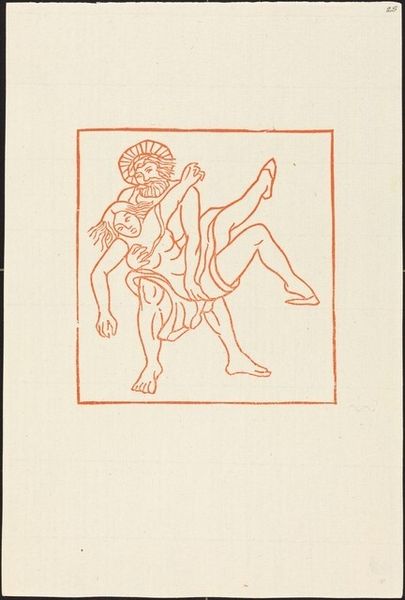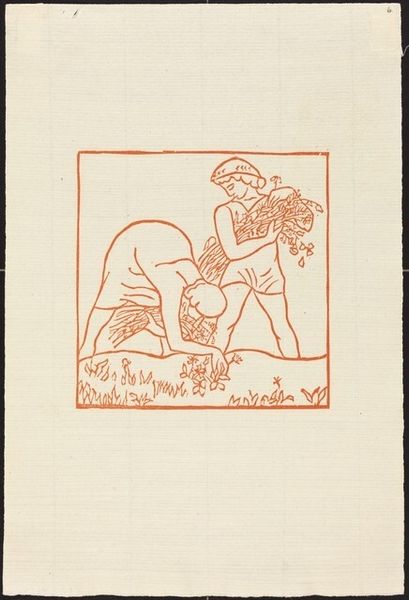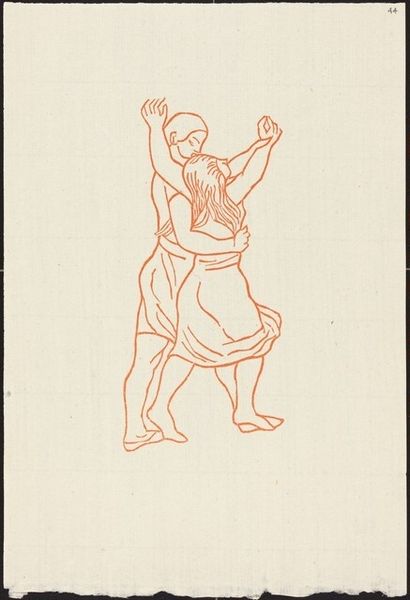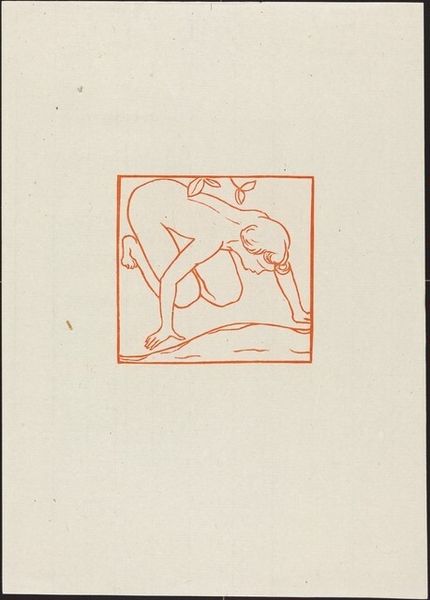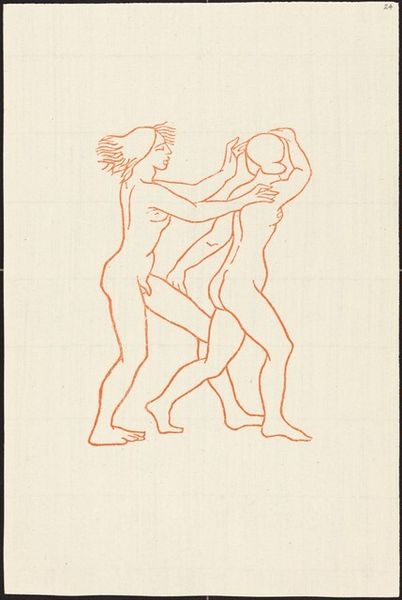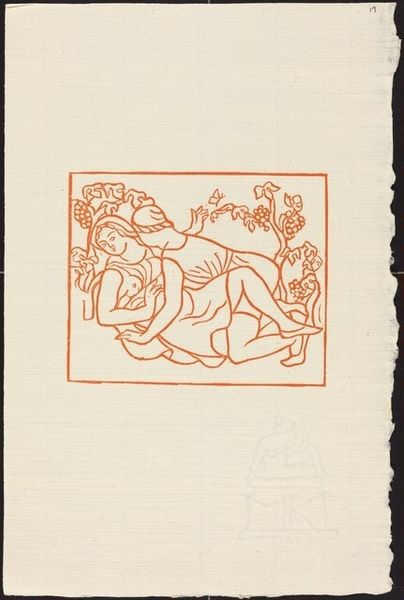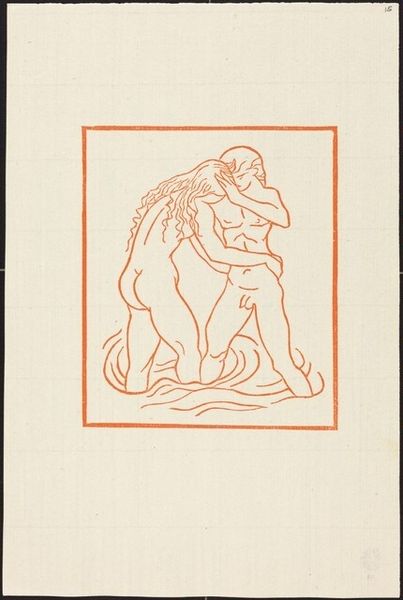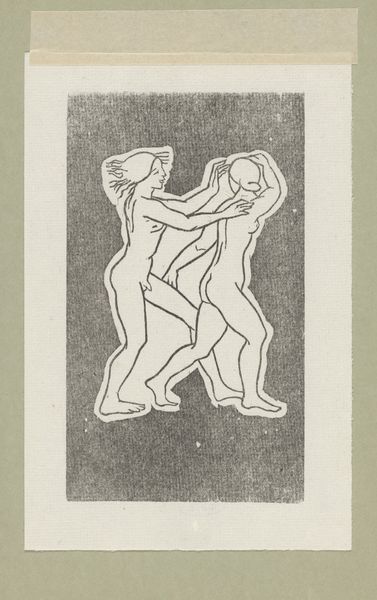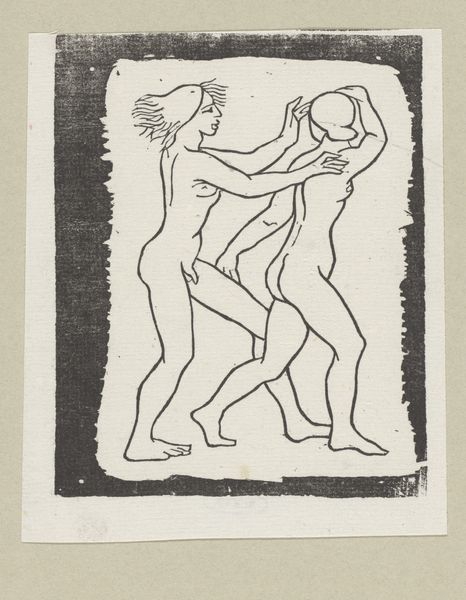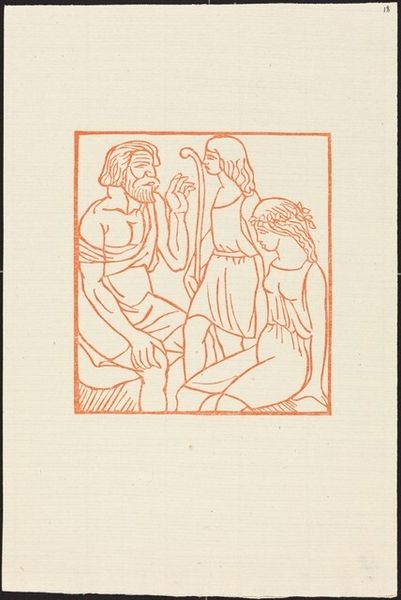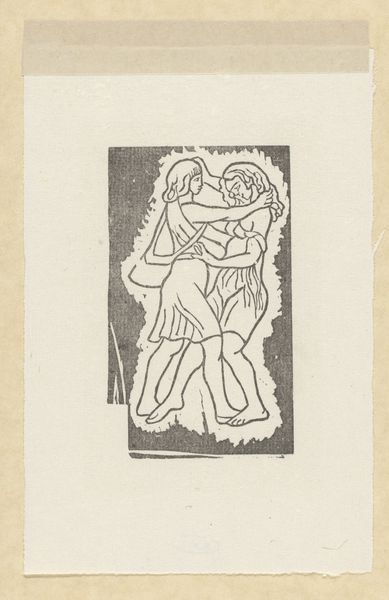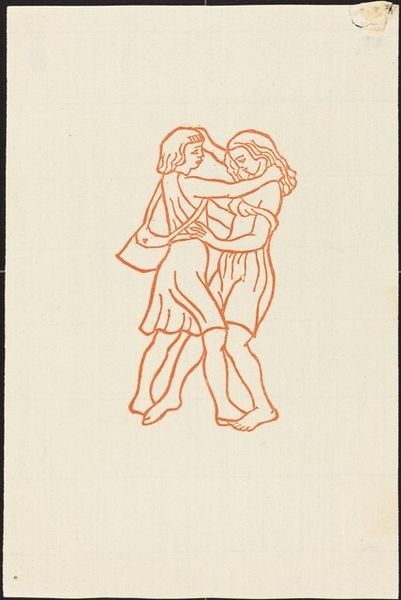
Fourth Book: Daphnis and Chloe at Play (Daphnis monte sur le dos de Chloe) Possibly 1937
0:00
0:00
drawing, print, linocut, ink
#
drawing
# print
#
linocut
#
figuration
#
ink
#
linocut print
#
line
Copyright: National Gallery of Art: CC0 1.0
Curator: Ah, this piece always brings a smile to my face. Aristide Maillol's "Fourth Book: Daphnis and Chloe at Play," possibly from 1937. It’s a linocut, printed in ink. The line work gives it such a lively, immediate feel, doesn’t it? Editor: My immediate reaction is simplicity. It's just two figures outlined in this warm reddish-brown ink, pressed into a square frame, almost like a frieze. It conveys movement, yet it is strikingly still. Curator: Exactly! And the way Maillol captures the sheer joy of…well, two youngsters clowning around! You can almost hear their laughter. It reminds me of summer days spent by the ocean, the kind of carefree abandon that’s just infectious. The playful innocence, the lightheartedness... Editor: The composition also contributes to this mood. See how their forms mirror each other? There's the echoing curve of the back of the figure acting as a support and that of the figure on top as it bends forward, creating this wonderful, enclosed visual rhythm within the stark lines. It also contains semiotic elements relating to weight, support, burden, carefree moments, strength, and human interconnection. Curator: He’s drawing upon, no pun intended, a classical theme here, harking back to ancient pastoral romances. The idyllic, unspoiled love between Daphnis and Chloe…Maillol strips it down to its barest essence of youthful frolic. Do you think this minimalist aesthetic adds depth to the work? Editor: Definitely! Maillol has presented them in the context of essentialism. This distillation draws our focus to the interplay of lines, how few strokes can embody so much physicality. The linocut as a medium certainly supports this simplification; in it the process of reduction serves the message perfectly. This adds more layers of interpretation and analysis. Curator: And I think this almost childlike approach emphasizes the figures' inherent purity. He takes that sense of history, those pastoral settings, but makes it timeless. You can place this artwork in any time, any place, and still relate to the joy that jumps out from it. Editor: Agreed! It really shows that in stripping things down to their most basic elements, an artwork can sometimes communicate the deepest and most resonant emotions and universalities. Curator: Well said!
Comments
No comments
Be the first to comment and join the conversation on the ultimate creative platform.
